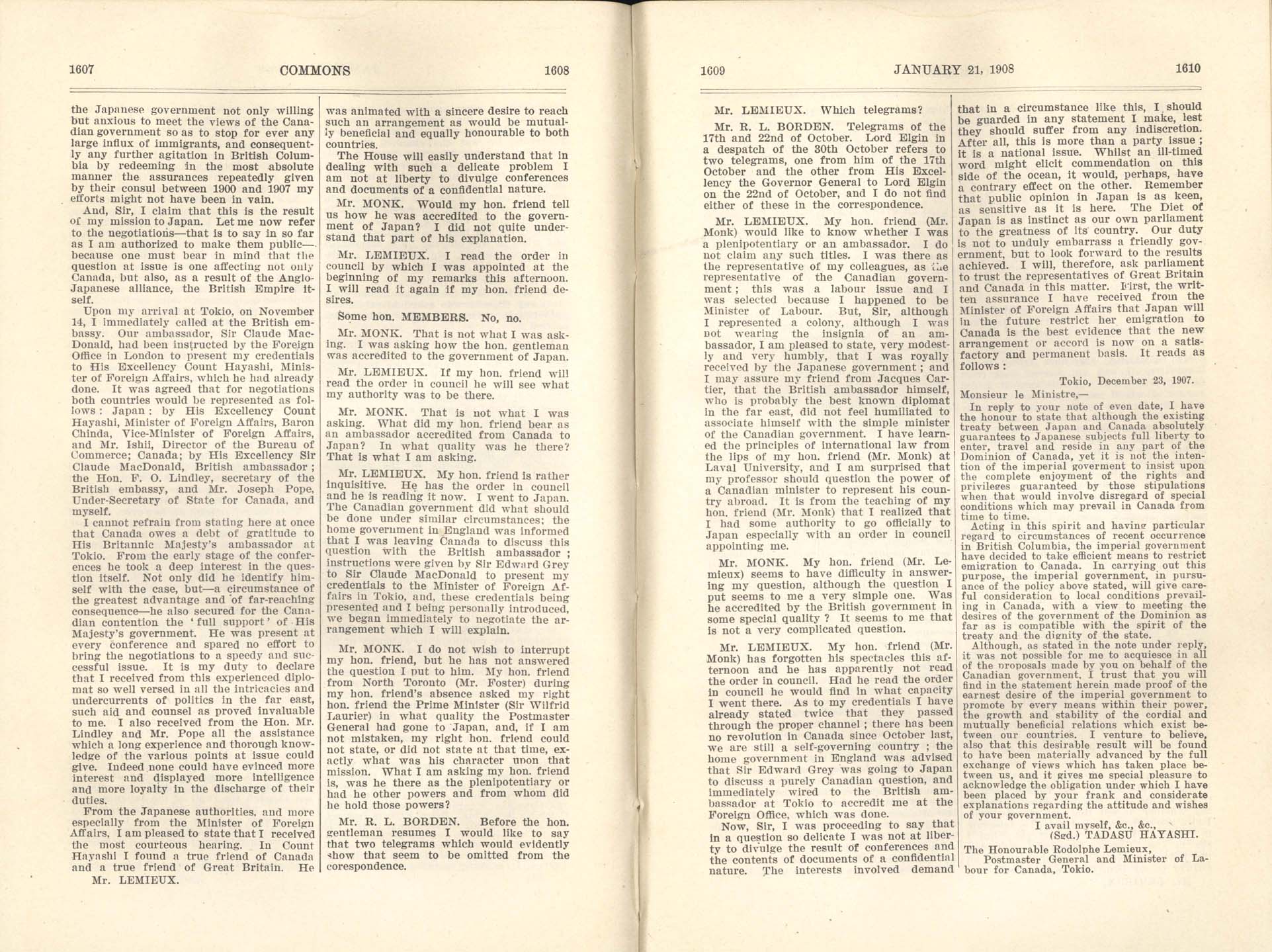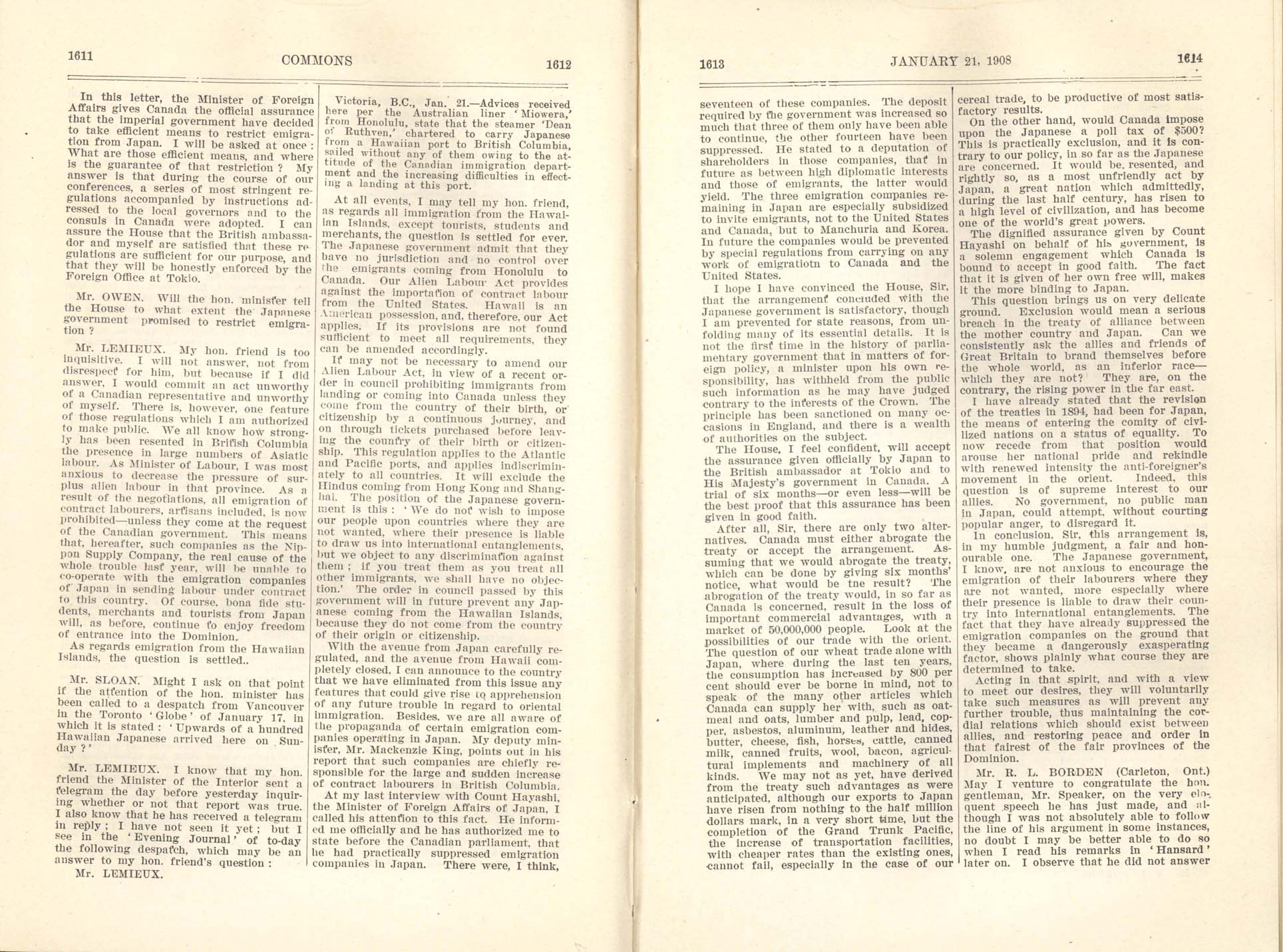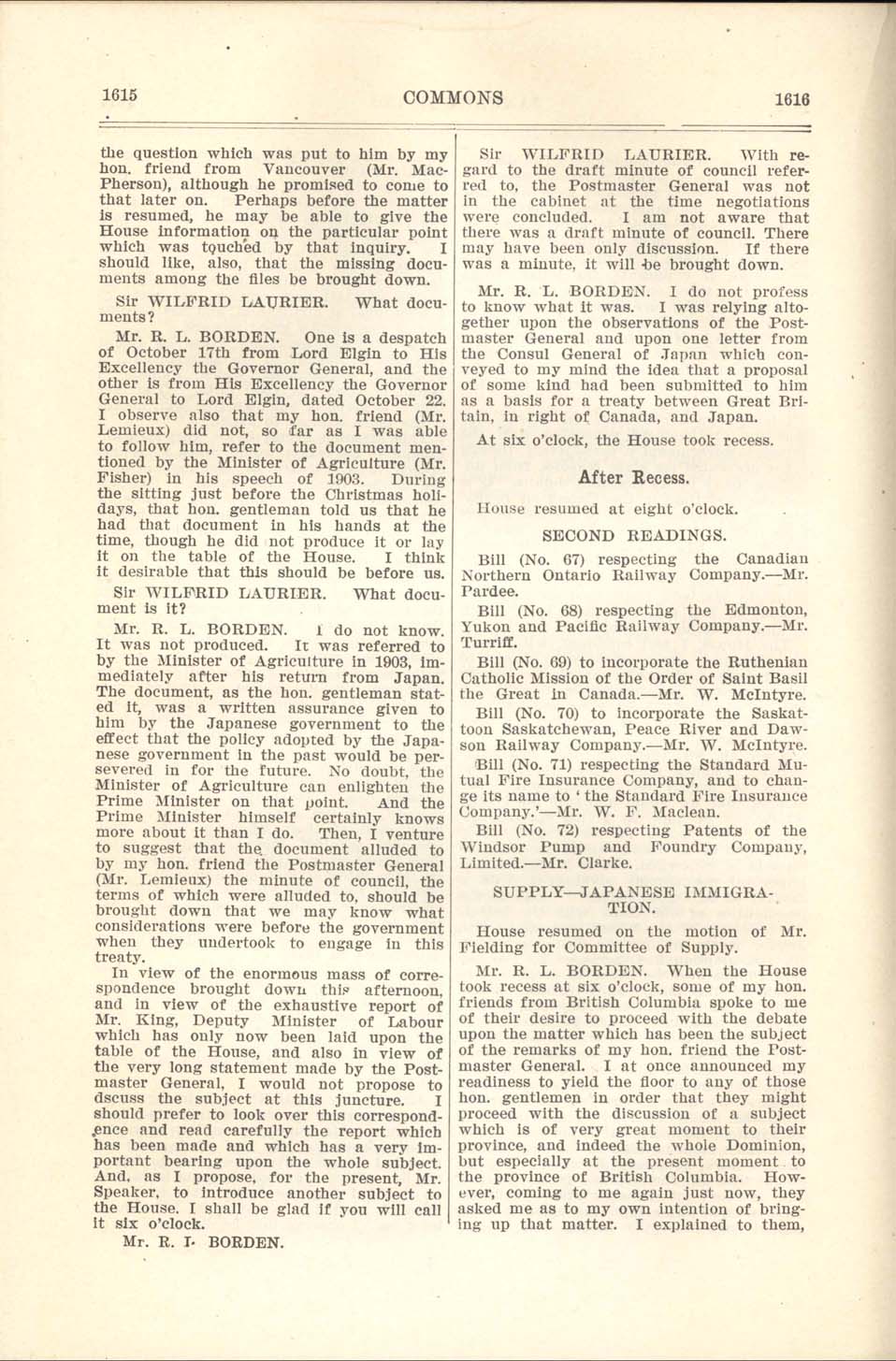(Hayashi-Lemieux Agreement)
In 1908, Canadian Minister of Labour Rodolphe Lemieux negotiated an agreement with Japanese Foreign Minister Tadasu Hayashi to restrict Japanese immigration to Canada. Under the terms of the “gentlemen’s agreement,” the Japanese government agreed to voluntarily limit the number of Japanese immigrants arriving in Canada on an annual basis.
Restrictions on Japanese immigration were deemed necessary following an influx of Japanese labourers in British Columbia and a surge of anti-Asian sentiment in the province. Over 8,000 Japanese immigrants arrived in Canada in the first ten months of 1907, a drastic increase from previous years.[1] Reports that the Grand Trunk Pacific Railway planned to import thousands of additional Japanese labourers to work on the western section of the railway fuelled anti-Asian sentiment.[2] The hostility against the Asian population developed into overt violence during a rally organized by the Asiatic Exclusion League in Vancouver in 1907. The crowd turned into an uncontrollable mob, targeting Chinese and Japanese residents of the city and destroying their personal property.[3]
Following the Vancouver Riot, Prime Minister Wilfrid Laurier sent Lemieux to Japan to discuss restrictions on Japanese immigration. Canada could not specifically prohibit Japanese individuals from immigrating because an existing trade treaty with Japan guaranteed the Japanese full liberty to enter, travel or reside in any part of the Dominion.[4] Lemieux asked Hayashi to voluntarily restrict immigration in the interests of Anglo-Japanese harmony. While Japan was initially reluctant to impose restrictions on its citizens, they concluded it was necessary to co-operate with Canada in order to maintain good relations with the British Empire.[5]
Japan agreed to restrict the number of passports it issued to male labourers and domestic servants to 400 annually. Four classes of immigrants would still be permitted entry into Canada: returning residents and their wives, children and parents; immigrants employed by Japanese residents in Canada for personal and domestic service; labourers approved by the Canadian government; and agricultural labourers contracted by Japanese land holders in Canada. Although no specific regulations were enacted to enforce the quota, the agreement led to a significant decline in Japanese immigration. The year following the agreement, only 495 Japanese immigrants arrived in Canada.[6]
While the agreement limited the number of adult males that could enter Canada, it did not include restrictions on the wives of Japanese immigrants. After the quota was put in place, a large number of Japanese women began migrating to Canada as “picture brides.” Japanese men in Canada would choose brides based on photographs sent to them by relatives in Japan. Once their marriage was registered in Japan, the bride was eligible for a passport to Canada. The arrival of more Japanese women facilitated a natural increase in the Japanese population of Canada.[7]
Library and Archives Canada. Canada. Parliament. House of Commons. Debates, 10th Parliament, 4th Session, Volume 1 (21 January 1908): 1607-1616.
- Ken Adachi, The Enemy that Never Was: A History of Japanese Canadians (Toronto: McClelland & Stewart Inc., 1991), 81.
- Valerie Knowles, Forging our Legacy (Ottawa: Public Works and Government Services, 2000), 36.
- Adachi, 73.
- Treaty of Commerce and Navigation Between Great Britain and Japan, 16 July 1894 http://web.archive.org/web/20120930132954/http:/www.fco.gov.uk/resources/en/pdf/treaties/TS1/1894/23
- Patricia E. Roy, A White Man’s Province: British Columbia Politicians and Chinese and Japanese Immigrants 1858-1914 (Vancouver: University of British Columbia Press, 1989), 208-209.
- Adachi, 81-82.
- Adachi, 81-82.


